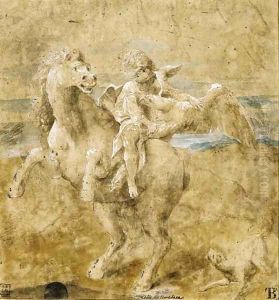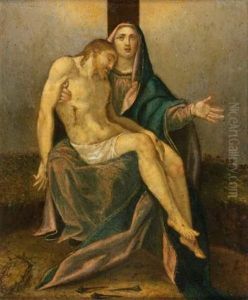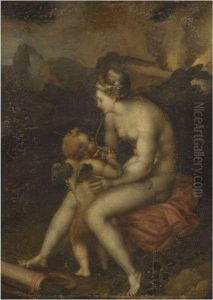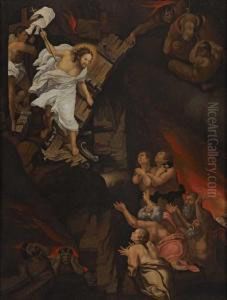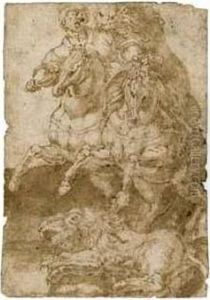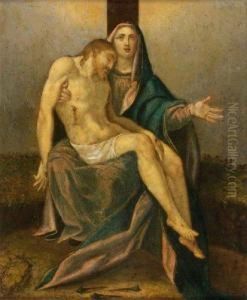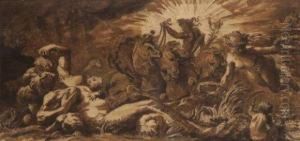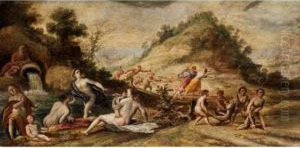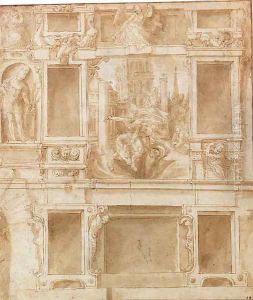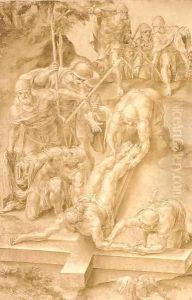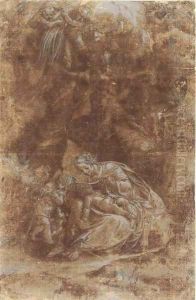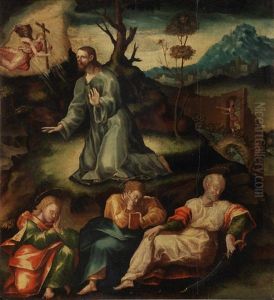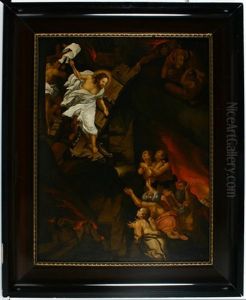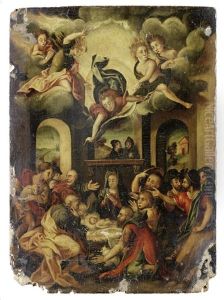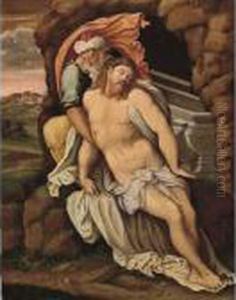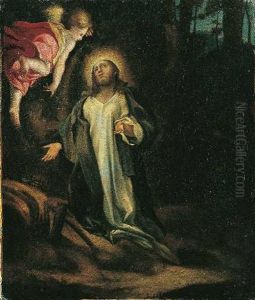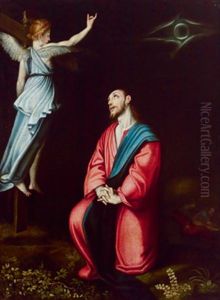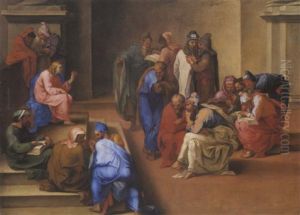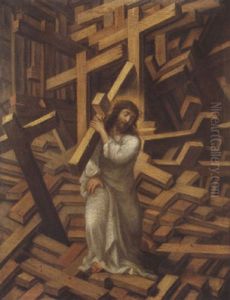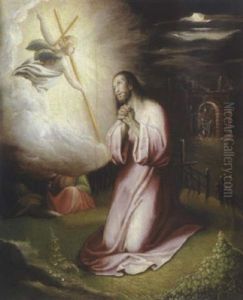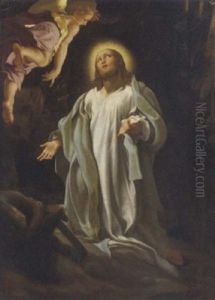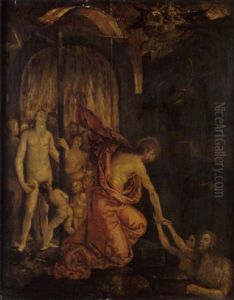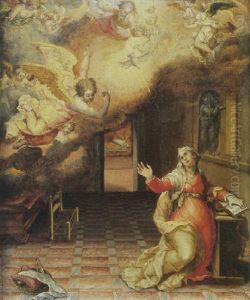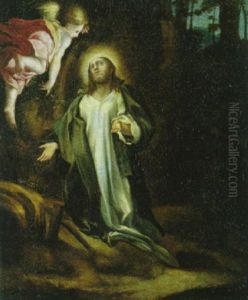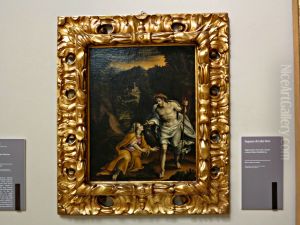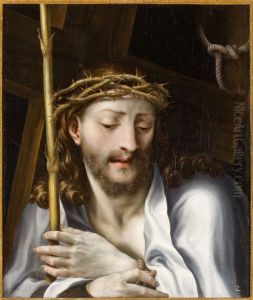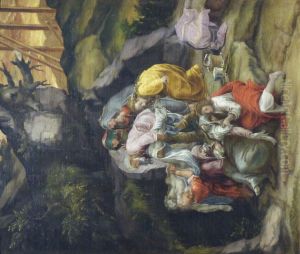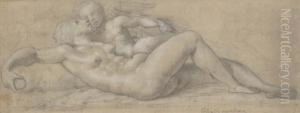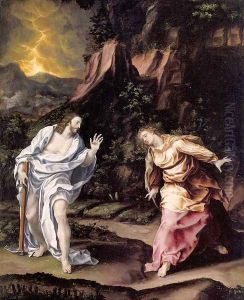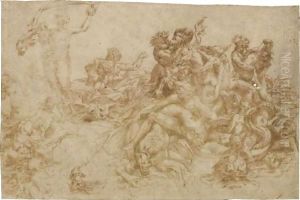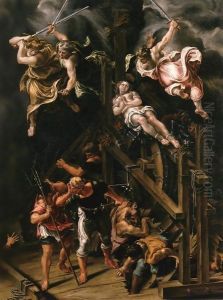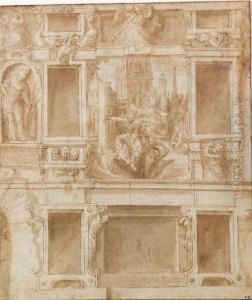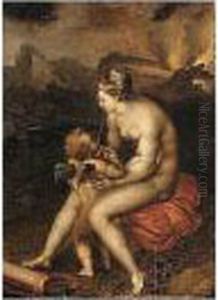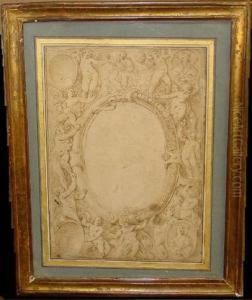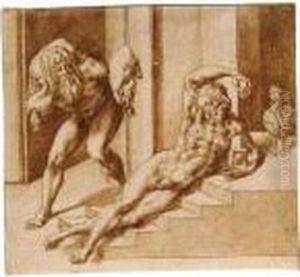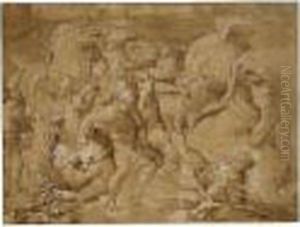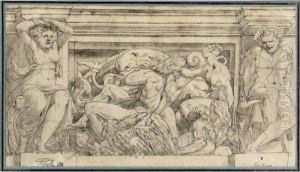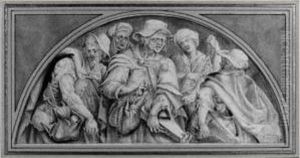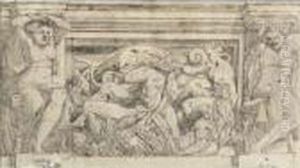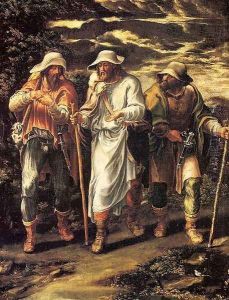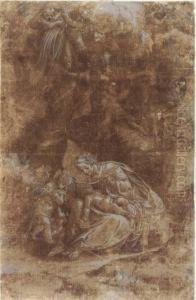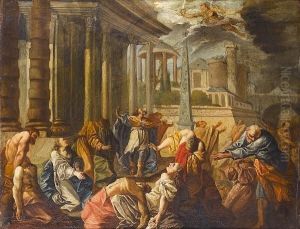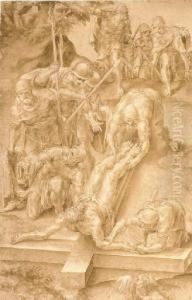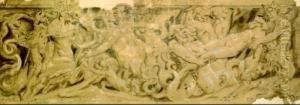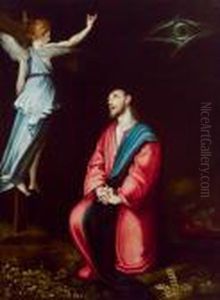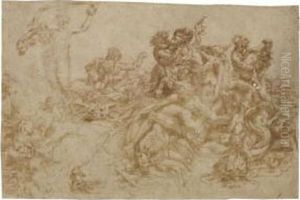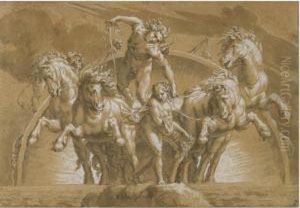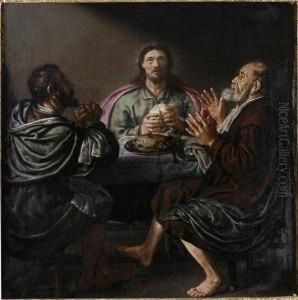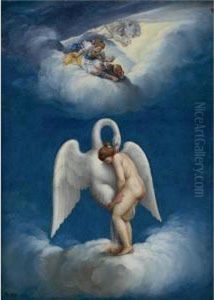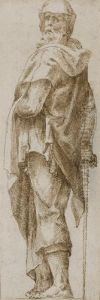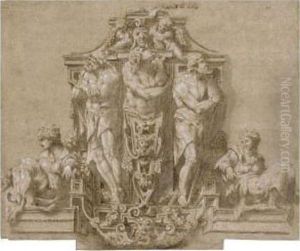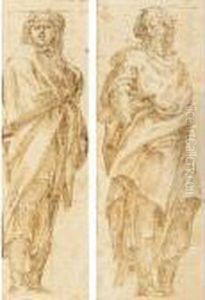Lelio Orsi Paintings
Lelio Orsi, also known as Lelio da Novellara, was an Italian Renaissance painter and architect who was active primarily in the region of Emilia-Romagna. Born in Novellara, near Reggio Emilia, in 1511, Orsi was an important figure in the transition from the High Renaissance to Mannerism. He is known for his unique style that blends the influences of Correggio and Parmigianino, two prominent painters of the Parma school, with the local artistic tradition of Emilia.
Orsi was initially trained by his father, who was also an artist, before entering the workshop of Antonio da Correggio, whose influence is evident in Orsi's early works. However, Lelio Orsi developed his own distinctive style, characterized by complex compositions, elongated figures, and a sophisticated use of light and shadow, which contributed to the emergence of Mannerism in Northern Italy.
Throughout his career, Orsi worked on various commissions for prominent families and religious institutions. He painted altarpieces, frescoes, and mythological scenes, and he was also skilled in creating illusionistic architectural paintings, which were popular at that time. His works are noted for their intellectual complexity and often contain allegorical or mythological themes.
One of Orsi's most significant contributions to the art world was his role as a mentor to the young Giovanni Battista Moroni, who would go on to become one of the most accomplished portraitists of the 16th century. Orsi's own portraits, while less numerous than his other works, demonstrate his keen eye for detail and psychological insight.
Despite his accomplishments, Lelio Orsi remains a somewhat enigmatic figure, with less documentation available about his life compared to other artists of his caliber. Nevertheless, his work has been well-regarded by art historians, and his paintings can be found in several major art museums and galleries in Italy.
Orsi's career continued to flourish throughout the mid-16th century, but as the Mannerist style began to wane, his influence and popularity also declined. He passed away in 1587, leaving behind a body of work that has continued to intrigue and inspire scholars and art lovers alike. His legacy is that of an innovative artist who bridged the gap between the harmonious naturalism of the High Renaissance and the sophisticated stylization of Mannerism.
